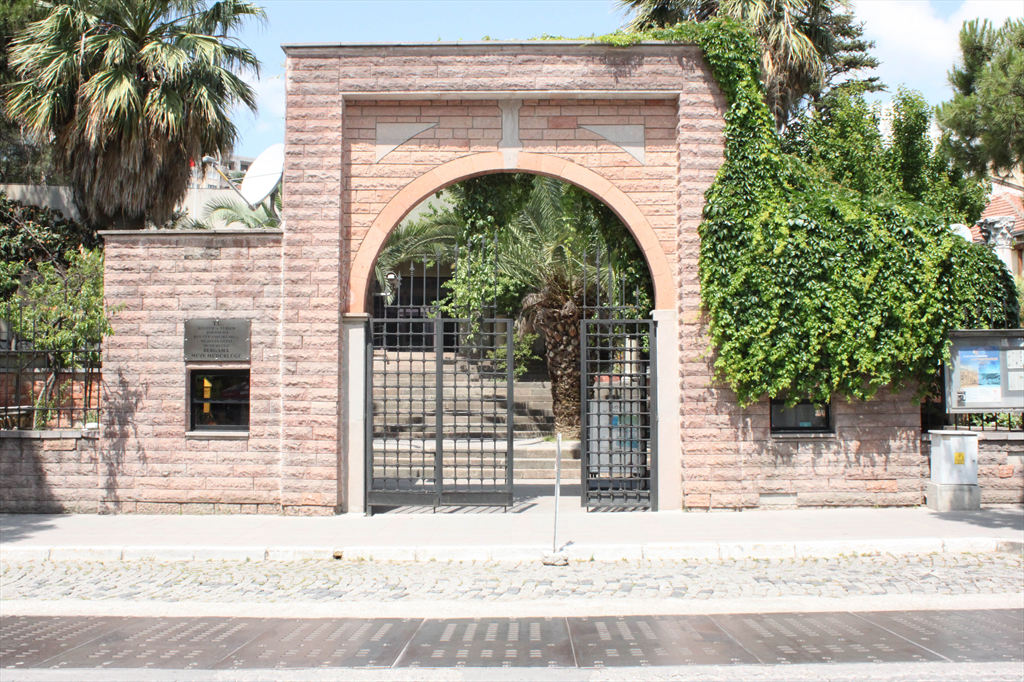Bergama Museum
In Bergama, one of the earliest discovered ancient cities among the archaeological settlements in Anatolia, the first research studies began in 1865 as a result of the high reliefs of the Zeus Altar inside the Byzantine wall in the Acropolis. These excavations were transformed into official excavations by C. Humann and A. Conze between 1878-86. A small warehouse museum was built in the garden of the excavation house in order to protect the artifacts unearthed after these excavations. Between 1900-13, W. Dörpfeld, H. Hepding and P. Schatzwann conducted excavations at the Acropolis. In addition to the excavations carried out in the Acropolis, as a result of the excavation activities in Asclepion, the existing building was insufficient due to the increase in the excavation activities and the construction of a new museum building was required.
In 1924, some of the archaeological artifacts were transferred to the building in the city center, which was used as the Community Center Building in 1934, and started to be exhibited and museum service was tried to be provided. In 1928, Osman Bayatlı was brought to the management of this museum. In addition to the archaeological works, O. Bayatlı has included ethnographic works that shed light on the recent life culture of the region in the museum collection.
Marshal Fevzi Çakmak, who came to Bergama in 1932, gave an order for the establishment of a museum. Within the scope of the project inspired by the Zeus Altar plan by architects Bruno Meyer and Harold Hanson, within the framework of Turkish-German cooperation, the foundation of the museum was laid in 1933 at the request of Izmir Governor Kazım Dirik, in its present location, which is an old cemetery. Bergama Museum, whose construction was completed on October 30, 1936, was opened to visitors by İzmir Governor Fazlı Güleç.
Most of the archaeological artifacts in the exhibition are found in the excavations in the Acropolis, Asklepion, Red Hall (Serapeion), Musalla Cemetery. In addition to these, it constitutes the artifacts unearthed in excavations made in Pitane (Çandarlı), Myrina (Güzelhisar), Gryneion (Yeni Şakran) ancient cities, Kestel and Yortanlı (Allionai) Dam Rescue excavations in the close vicinity of Bergama, and in the center of Bergama, Dikili Çandarlı District 3rd degree archaeological sites. The chronology starting from the Bronze period in the exhibition of the work covers a wide time span until the end of the Ottoman period. Bowls for daily use or votive purposes, pottery and Yortanlı vessels, spouted vessels constitute the pieces of artifacts belonging to the bronze period. Local productions specific to ancient Pergamon, megara bowls, applique ceramics, Pergamon sigillata, oil lamps, kistophor coins that were first minted in Bergama constitute another remarkable artifact groups.
In the ethnography section, there is a rich collection of works reflecting the traditional social life and cultural values of Bergama and its region.
Local clothes of Yörük, Turkmen, Çepni tribes in Bergama region, bridal and daily clothes belonging to Bergama, carpet, rug, saddlebag samples classified as Yuntdağı, Kozak, Yağcıbedir regions of Bergama, one of the important carpet production centers of Anatolia, The personal clothes of Tuzcu Efe, one of the prominent masters of Bergama, used during the War of Independence constitute an important group of works.

.jpg)
.jpg)
.jpg)
.jpg)
.jpg)
.jpg)
.jpg)
.jpg)
.jpg)
.jpg)

.jpg)
.jpg)
.jpg)
.jpg)
.jpg)
.jpg)
.jpg)
.jpg)
.jpg)
.jpg)


Comments
No comment left, would you like to comment?